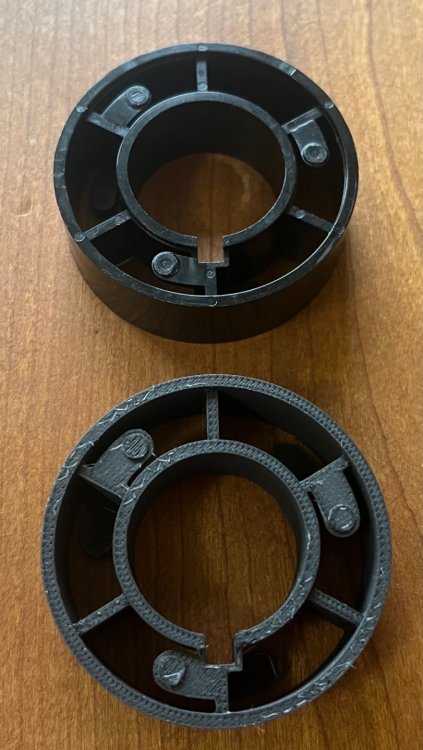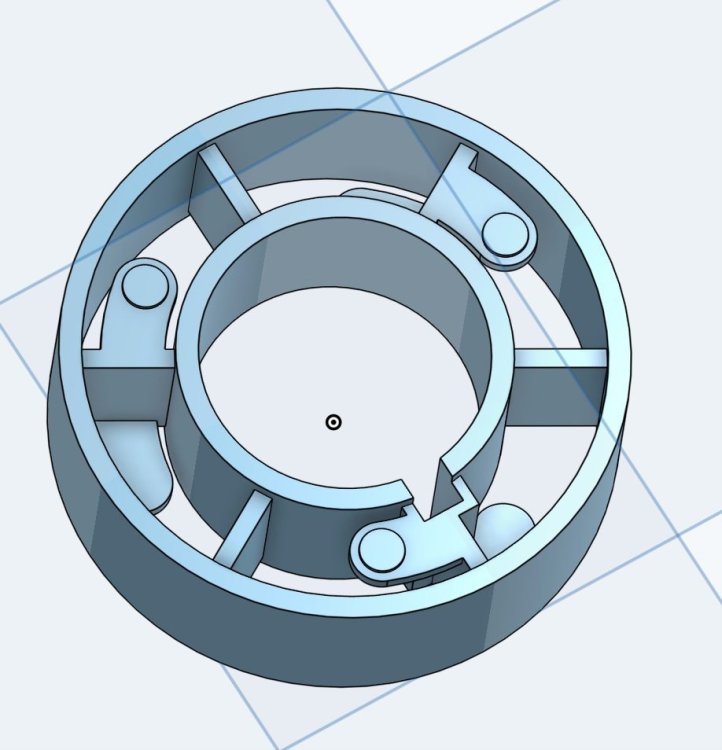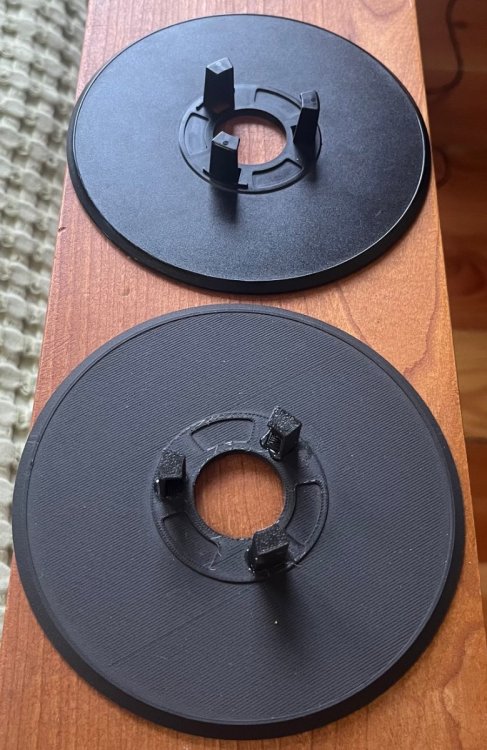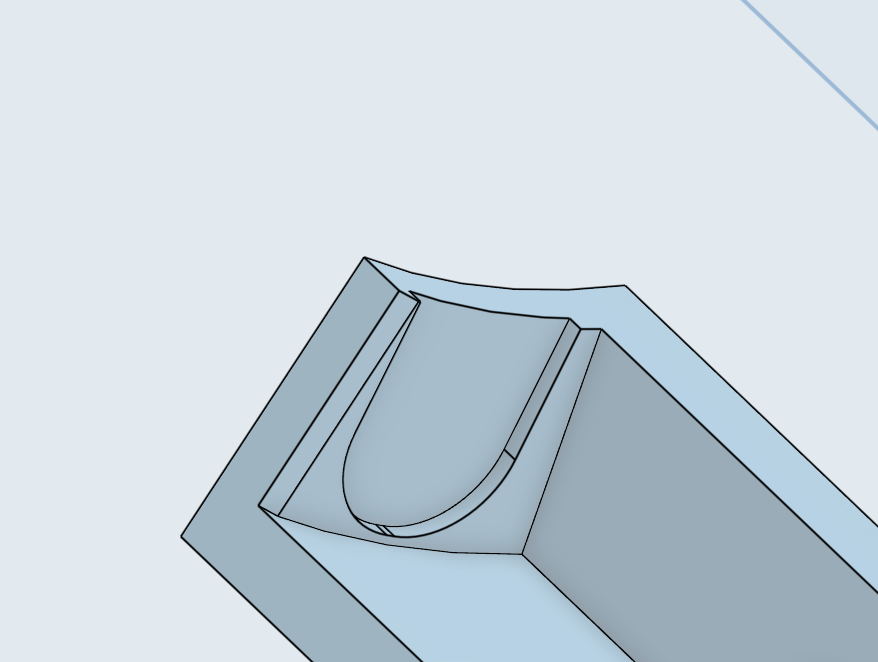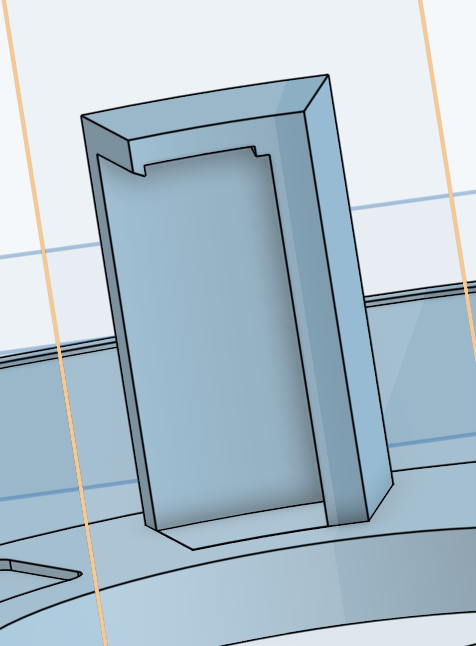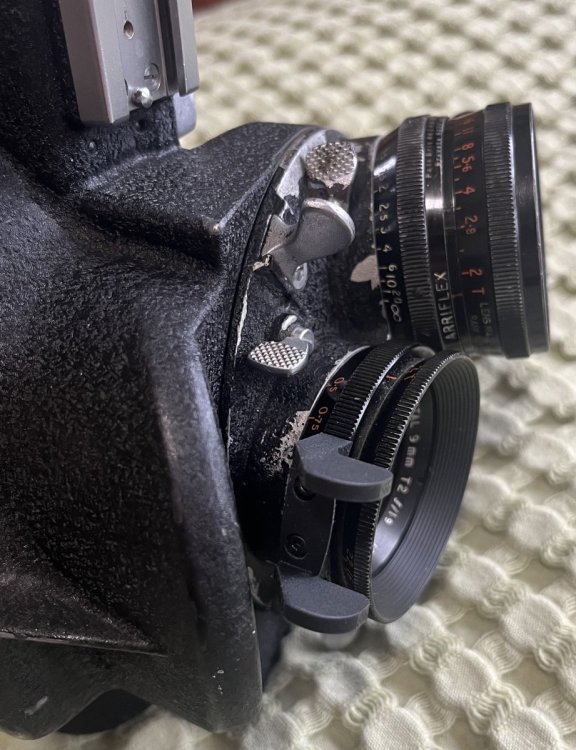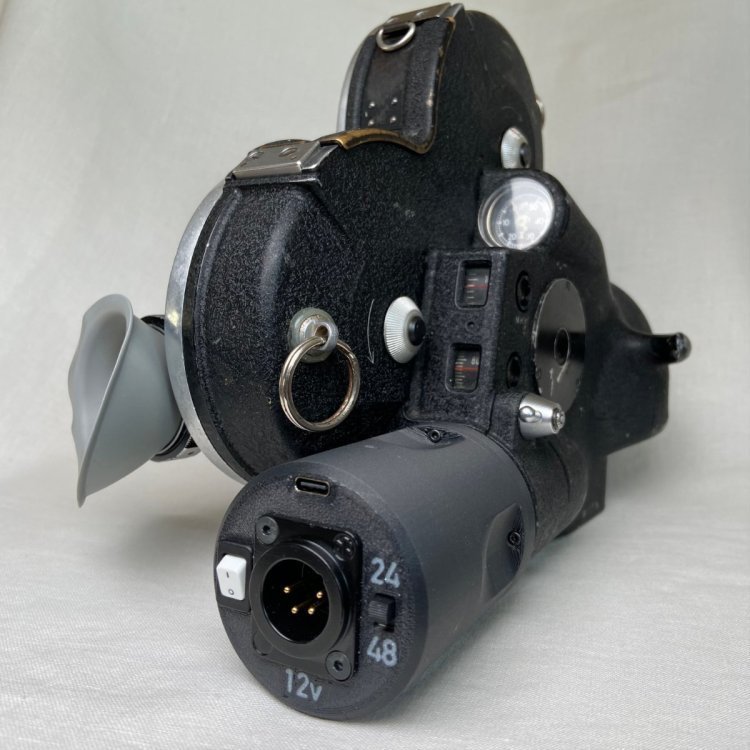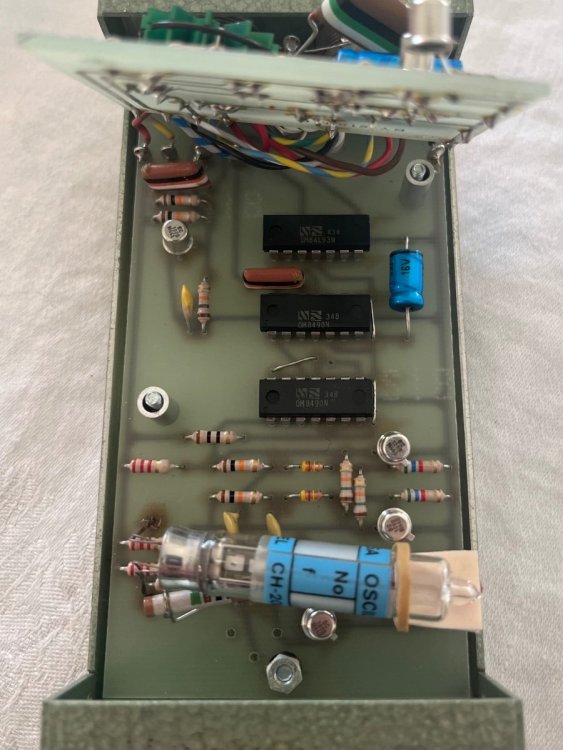-
Posts
60 -
Joined
-
Last visited
About Kamran Pakseresht

Profile Information
-
Occupation
Cinematographer
-
Location
Portland, OR
Recent Profile Visitors
The recent visitors block is disabled and is not being shown to other users.
-

A New Crystal Sync Motor for the Arri 16s
Kamran Pakseresht replied to Kamran Pakseresht's topic in 16mm
Yes! I am still planning to do so, I have been iterating on the design and gathering feedback with earlier customers. The guys at Du-All have been very helpful in testing - which pushed me into another round of redesign. The motor has an “inching” feature now and a few other nice changes. Once I’ve sold a few more and gathered some feedback I plan on releasing the designs and the plans hopefully along with a video explaining the build. Have been looking into PCB design a bit as well - as that would greatly simplify assembly for folks - am thinking of possibly selling a discounted assemble yourself “kit” if I am able to sort that out as the assembly is sort of the bottleneck right now (am still generally getting them out within a week, but gets difficult when orders stack up) -
Wow this is great! I have a 4008 ZM 4 that I have been experimenting with, and like you, I had only shot on 50d previously, which I was very impressed with when comparing to 16mm. I just purchased some 500T to experiment with the grainier side of things. This looks very good and I'm not sure if it's how far stocks have come or or how far scanning has come but I could watch a whole feature on super 8 without really being taken out of the story by the grain. How did you find working with the camera? Did you use the stock lens? Did you use the motorized system for zooming/focusing mostly? Were you using the mechanical auto-exposure system? I really think the auto exposure system on that camera is such a cool feature to watch work. Were you using a tripod on some of these shots? Did you just attach it to the bottom of the handle grip? Also thank you for the information on the filter - I did not know it was still required these days and had assumed you could remedy any issues in post related to the color temp of the film. This was a very cool experiment and thank you for sharing it.
-
Yea I am intending to send some prototypes off to some owners for testing - as well as making the designs available for others to print themselves and iterate on if they'd like. I'm not in a rush, eventually we'll end up with a functioning A-Minima 200' daylight spool that can be affordably printed, will work well, and will help keep these cameras chugging. It's not that complex of a problem, it's just a niche problem, which is why it hasn't been solved yet. Now seems like a good time since these spools are getting harder to find.
-
Hi there, I finally had some time today to take a look at the A-Minima spools I bought off Ebay a while back and see if I could recreate them, as it seemed that folks were having a hard time finding them. @Dirk DeJonghe mentioned in my original split reel post that hey had become difficult to source. I might need a little help from the community with some questions about the camera, and also in testing these, because I do not have this camera myself. I would be happy to send them to someone if they were able to test. I first started with the core: the top is the original and the bottom is the 3d printed version: This works well - I tested it with the original flexible flanges and it functions exactly the same as the existing core. Onto the flexible flanges: These are much trickier because they have a specifically designed ramped slot to slide onto the core on the underside, i'll explain: The little slanted side allows the core to easily slide in one way - but to be a bit more stiff coming out the other way - this works well! But the issue is actually in the orientation, it is facing downwards when printing: The reason this is an issue is that the underside of any free-standing surface in a 3d print is typically much lower quality because of the need for support, so I have decided to make these parts separate so the locking mechanism can be printed in an orientation that will ensure a good resolution. This part is then super-glued into notches on the flange base. It is a bit tricky because when 3d printing you have to design things with the strengths of 3d printers in mind - so I may actually end up providing two different sets of models - 1 that is optimized for 3d printing and 1 that could be used to make a mold for mass production (basically an exact copy of the existing spools). So these are not finished yet - I was hoping some people could chime in on the properties of these spools that make them unique? I was reading in the A-minima manual here: "standard metallic 200 spools and 400' reels cannot be used with the A-Minima" - why exactly is it that metal 200' spools can't be used? My assumption is that the flexibility of these reels is an important aspect of their function? I'd love to hear from someone who has actually used the camera so that I can plan accordingly with the materials and design considerations. And as always I'll be making these designs available for anyone who might want to use them - assuming they end up working! Thanks!
-
I just wanted to say I think this a great review and really thorough - I have been keeping my eye on these cameras because I occasionally make youtube videos and short documentary projects. I currently use the 4k bmpcc but would love to be able to punch in more and eventually one of these might make sense as an upgrade. I had a question about the comparison done at around 17:30 - you are comparing a 4k image punched in 5x on 50d against an image on the blackmagic 12k recorded at 6k punched in 5x on the blackmagic. If you could scan the 50d at 6k - would it appear sharper? I guess I'm wondering if the poor sharpness is because of the lower resolution of the scan or because of the resolving power of the film?
-

How Crystal Sync Motors work and modern sollutions
Kamran Pakseresht replied to Tyler Fukuda's topic in General Discussion
I am using a Brushed DC motor that’s rated for max of ~10k rpm at 12v and a high power motor driver from Pololu here - partly because the motor needs a lot of current for such a high rpm and partly because it’s a very compact driver that can fit in the enclosure I designed. It also had the added benefit of having a regulated 3.3v output that is juuuust enough to power the pico without needing an extra step down converter in the mix. And yes I designed a base collar that fits on the back of the motor and holds a Hall effect sensor (Honeywell SS451A) with a little jst plug to make it easy to connect and then there is a disc that has 4 equally spaced tiny neodymium magnets which fits on the little bit of shaft that protrudes out the back of the motor. Seems to work pretty well with such fast speeds. That is an awesome camera to have on your bench! Do you have an optical encoder that you can recommend? I’d like to try something like that out - is an optical encoder generally better than a Hall effect sensor for these type of projects? -

How Crystal Sync Motors work and modern sollutions
Kamran Pakseresht replied to Tyler Fukuda's topic in General Discussion
I was curious about what Aapo had said because I really am just measuring motor speed (with only 4 magnets and a hall effect sensor) and comparing it to my desired speed. I am using a number of hardware features on my board, the Raspberry Pi Pico, like PWM input edge counting and DMA (direct memory access) to avoid using up valuable CPU time - but it made me wonder if I am going to run into any real-world issues with this approach. So I recorded the shutter on my Arri 16S with my motor running at 24fps speed on my black magic camera, also running at 24fps and set it at a high shutter speed and just let it go for 9 minutes. I know there is much more experience in this thread than I have about this, I am fairly new, but I've recorded a number of tests already without noticeable issues and am just wondering - given the results in the video - would I ever really get an out of sync issue with this approach on realistic (up to 400ft?) film lengths? Also, was it misleading of me to call this a crystal sync motor? I had assumed that because it was accurate enough to synchronize with audio and was using a 12mhz crystal to measure the motor frequency that it was a crystal motor. Should I rename it to something else? Maybe a sync sound motor? Also I really love this thread - thank you everyone for sharing all this information, it was very difficult for me to find some of this information previously and I'm excited to gather some of it in one place. -

How Crystal Sync Motors work and modern sollutions
Kamran Pakseresht replied to Tyler Fukuda's topic in General Discussion
The fundamental idea behind crystal sync motors is very simple: If you know how fast a motor is spinning, you can adjust its speed to run at a consistent rate. How fast a motor is spinning can be determined using a Hall effect sensor and 1 or more magnets affixed to the motors shaft in some way. Time is a funny thing because you can’t just say: tell me how long it took between detections of the magnet crossing my sensor, unless you can accurately measure how much time passed between those two moments. Generally quartz crystals are used because of their accuracy and is why it is called crystal sync. In modern times most microcontrollers contain a crystal oscillator and can be used for this purpose. The general process is: measure the speed of the motor, generate an offset ratio between desired speed and current speed, and use that ratio to modify the actual motor power. Do this many times in a loop over and over until you are at your desired speed and even then keep doing it to keep it locked. Historically and even still now you can also use what’s called a Phase Locked Loop (PLL) IC to compare your motors speed to a crystal oscillator and output a voltage proportional their offset which drives a VCO (voltage controlled oscillator) and use that to drive a PWM signal for a brushed DC motor driver which then drives your motor. This setup would not require a microcontroller at all, and is generally how they were built before microcontrollers were common place. You can also model a PLL in software. I’m working on a video to explain how I built a crystal sync motor for the Arri 16S but the concept for building one for any other camera is basically the same, so hopefully it will be useful for just generally understanding the process. I would say to not be discouraged in trying to build one but it has been incredibly helpful to have a 3d printer and a set of digital calipers for measuring and modeling. It took me a couple months of working at it to end up with a motor accurate enough to record sync sound on lengths of film commonly available today. There are much more feature filled and accurate crystal sync systems available but if what you’re trying to do is just record some sync sound on one or two speeds, it’s definitely achievable, but you probably need to be a bit of an engineering/tinkering type. -
Hi there, I am not sure how I missed this previously, but I got a new lens for my Arri 16s and it had "ears" (does anyone know what these things are called?) - and it makes it so nice to use the camera, you can focus with the same hand you are gripping the camera with. I just wanted to share a little design I whipped up yesterday cause I needed a pair for my old lens that didn't have any. It attaches with 2x m2 6mm socket head screws - but if you need to modify it in any way I've made it available in onshape here. You can also download the STL or the bambu project file if you happen to have a bambu printer from my github here. I print with 100% infill to prevent any snapping, seem pretty strong at 100%. I'll attach a couple photos of it - hopefully it's useful for others!
-
- 3
-

-
@Tim Carroll I am wondering if that is true about the NPR? I know the ACL was known for not having a registration pin but I thought the NPR did and found this quote on this NPR website here: https://eclaircameras.wordpress.com/npr-eclair-16/ Perfect steadiness ensured by combination of a registration pin and spring loaded side pressure bar.
-
Hi Tim, I am the individual selling the crystal sync motor. I am sorry for the mistake on my website, I quickly did a search on which cameras used the same motors in the same line as the camera I own (the 16s) and I must have confused the models. You have given me the correct list right here so thank you for that. i agree with the price frustration, I recently looked to see if I might be able to purchase a second camera (to practice doing a tear down on) and prices have jumped considerably. I purchased my original 16s for 550$ on Craigslist just 8 years ago. The other thing I’ve seen quite a lot of is Arri standard mount lenses on EBay with an [Exc +5] rating or listed in “mint condition” with obviously visible fungus growth in the photos.
-
An animator friend had asked if I could build an animation motor for the Arri 16s and I replied that I hadn’t thought about it before but I assume you would have to “configure” or “pre-set” the motor to understand where the start or end of a full frame of exposure was and then from there you could just tap a button and move forward a single frame. Am I correct in this assumption or does anyone have any more insight into how these animation motors became aware of where in their rotation cycle a single frame starts/ends? Without knowing that I’d imagine they’d run the risk of stopping with the shutter in the open position.
-
Hi all, It's been a few of months since I started my project of developing a crystal synchronized camera motor. At first I wasn't really targeting any camera system - I just wanted to prove that I could control a motor with a very fine level of precision. Well I made it a little further than I expected and we now have a completely new crystal synced motor for the Arri 16s: I intentionally developed the motor with easy to obtain components as it is my intention to open source the design files and the code, allowing anyone to build and repair these motors themselves. There are no custom PCB boards and many components can be swapped for alternatives if needed. The motor bypasses all of the internal electronics of the Arri 16s and directly drives the camera through a 12v power source provided by the 4-Pin XLR port on the rear. There are 2 available crystal speeds: 24 and 48fps. The USB-C port on the top allows you to re-program the motors micro-controller easily, and you can even change which speeds are mapped to the slide-switch through this port. There is a led on the top which illuminates white when power is applied, red when the motor is not up to crystal speed, and green once it achieves locking. It took quite a bit of work to just find the right components to build this motor - the Arri 16s is a particularly difficult camera to build a motor for, not just because of the space constraints, but because it takes 3 full rotations of the shaft to expose a single frame, so a 24fps speed actually requires 72 rotations or 4320 RPM and twice that speed for 48fps. These are relatively insane speeds for 16mm camera motors, and explains why the Arri 16s has been known to have a particularly heavy current draw. A very big thanks to Friedemann Wachsmuth who took the time to help explain and even share some code with me to get me started on this project. I am selling these motors for $350 at my website here. I have relentlessly tested these motors myself against stroboscopes and also compared with other crystal motors, but the proof is in the pudding as they say, so I've also included two youtube videos here, one from the 24fps test and one from a 48fps test - you can also get a sense for how loud the motor is by watching these - it is a bit quieter than the constant speed motor, but let's be honest, you're gonna need to be creative with your mic placement - I recorded on a Tascam digital field recorder with a small boom:
-

Inside a 24fps Crystal Controller (Photos)
Kamran Pakseresht replied to Kamran Pakseresht's topic in Bolex
Thanks for all the great info Aapo! I peeled up the top circuit to get a look underneath - wasn’t able to find much when searching these part numbers, but I bet at least some of these are the binary counters you mentioned.



